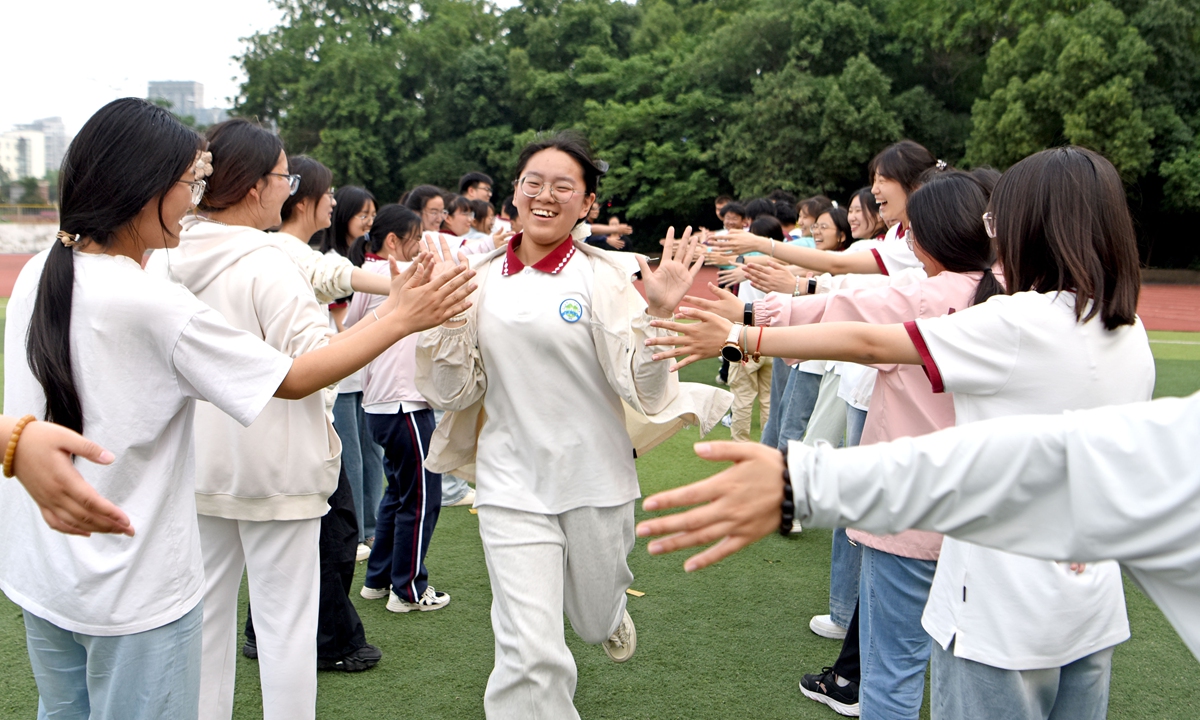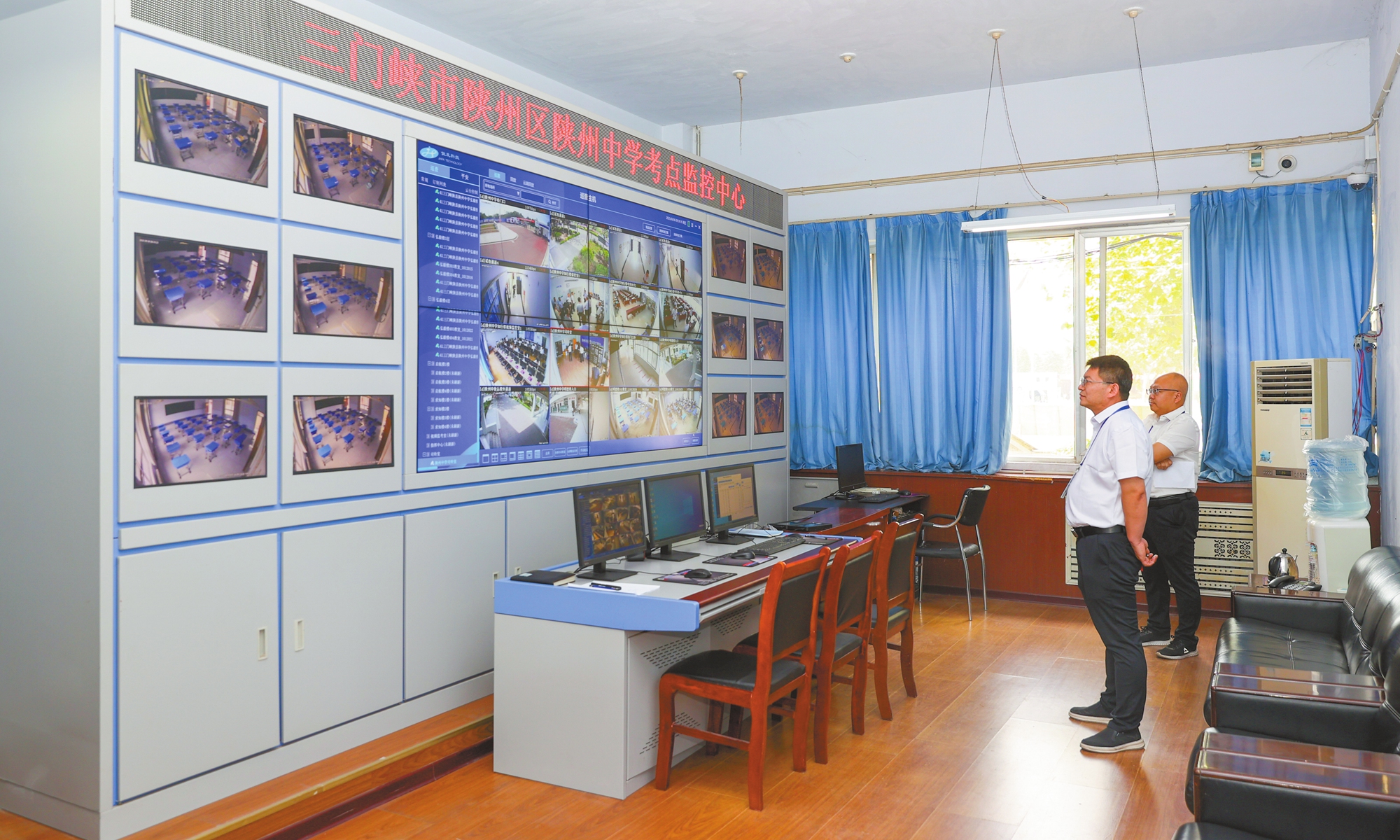Over the past weekend in China, all eyes were on one of the nation’s most important educational events — the Gaokao, or national college entrance examination. Some 13.35 million candidates took part in this pivotal event. At the Home of Journalists, we bring you this report from the Global Times that explores why the Gaokao matters for millions and how it resonates with China’s progress and development:

Senior high school students participate in a stress-relief game by high-fiving each other on the playground at Huainan No.1 High School in East China’s Anhui Province, on May 26, 2025. Photos on this page: VCG
China’s national college entrance examination, or gaokao, will take place as scheduled across the country from June 7 to 9.
The gaokao holds extraordinary significance in the country.
It represents a visible starting point. In this era empowered by knowledge, the gaokao remains the fairest and most reliable path for students from millions of ordinary families to achieve upward social mobility.
For countless students from ordinary backgrounds, a single exam admission ticket opens the gates to Tsinghua University, Peking University, scientific research institutes, key state departments, and major industries – rewriting their life trajectories.
According to the Ministry of Education, 2025’s gaokao has 13.35 million candidates, a decrease of 70,000 from 2024 – the first decline in nearly a decade.
This exam is not only a turning point in the lives of examinees, but also a vivid illustration of China’s commitment to educational equity and human rights, reflecting the principles of equality at birth and fairness in opportunity.
To ensure fairness, various regions have introduced advanced technologies.
According to CCTV News, East China’s Jiangxi Province will implement an AI-powered, real-time surveillance system for all 567,100 candidates. Using deep learning algorithms, the system monitors irregular behavior by both examinees and exam invigilators in real time. Actions such as starting early, turning one’s head, passing items, or leaving mid-exam will be flagged and recorded.
Improper conduct by invigilators, such as mishandling exam papers or lingering near candidates, will also be detected. Similar technologies have been adopted in provinces such as South China’s Guangdong and Central China’s Hubei, building a dual barrier of technology and regulation to protect fairness.
The gaokao is not only a competition of merit, but also a manifestation of China’s broader efforts to ensure human rights.
The Ministry of Education has implemented tailored services for students with special needs. This year, Braille test papers were specially designed for 16 blind candidates, marking the 12th consecutive year of this service. These examinees are granted 1.5 times the usual exam duration, according to the Xinhua News Agency.
Additionally, more than 14,000 candidates with disabilities will benefit from support measures such as enlarged-print test papers and personal guidance.
The gaokao also concerns everyone – it is a major event shared by the entire society.
In Wenshang county, East China’s Shandong Province, more than 40 taxis reportedly will offer free rides to examinees and their parents within the county from June 7 to 9 upon presentation of an admission ticket.
“The gaokao reminds us that hard work should be recognized. The effort and focus students put in today will positively impact their future,” Lü Bin, a parent of a student in Shanghai, told the Global Times. Regarding the pressure her daughter faces, she added, “During the school year, academics come first. The gaokao is a benchmark – it’s about doing one’s best. If they’ve tried their hardest, they will have no regrets.”

Ahead of the gaokao, students receive sunflowers from a teacher for good luck at a middle school in Liuzhou, South China’s Guangxi Zhuang Autonomous Region, on May 30, 2025.

Senior high school students with visual impairments attend a mock exam for gaokao at Hohhot Special Education School in North China’s Inner Mongolia Autonomous Region, on April 19, 2022.

Students prepare for the gaokao in the last minute in a classroom at Fengfeng No.1 High School in Handan, North China’s Hebei Province, on the evening of May 27, 2025.

Signs praying for success in Gaokao hang at the Confucian Temple in Harbin, Northeast China’s Heilongjiang Province, as many parents visit with students ahead of the exam, on June 1, 2025.

Staff members inspect surveillance equipment at the exam monitoring center of Shanzhou Middle School in Sanmenxia, Central China’s Henan Province, on June 6, 2025.
Source: Home of Journalists Facebook & Global Times
Article by Shan Jie
